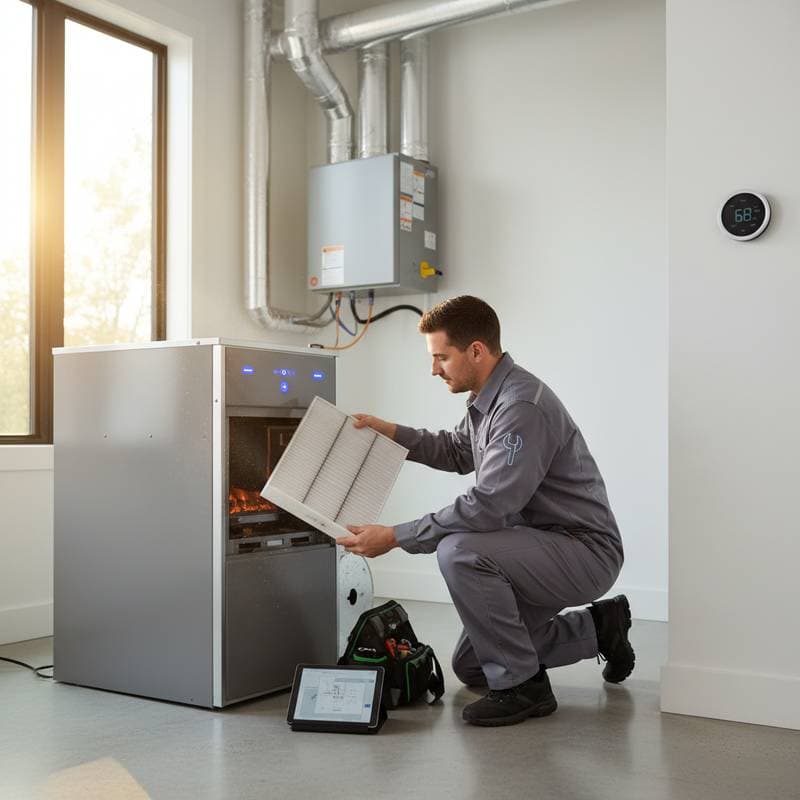2025 Costs for Whole-Home Water Filtration Systems: A Complete Guide
Homeowners often seek reliable water quality from every faucet. Issues such as cloudy appearance, mineral deposits, or unpleasant smells prompt many to explore filtration solutions. Whole-home systems address these concerns by treating water at the entry point, benefiting showers, appliances, cooking, and drinking sources alike. The primary question arises around expenses.
Most installations range from $1,500 to $6,000 when handled by professionals. This span reflects variations in system type, capacity, and setup demands. A deeper look into influencing elements enables informed budgeting and selection aligned with specific household needs.
Key Components of Whole-Home Filtration Systems
These systems, known as point-of-entry units, process all incoming water through the primary supply line. Benefits extend to improved skin and hair health from showers, reduced scale in appliances, and enhanced taste for daily use. Three primary types dominate the market, each suited to distinct water challenges and budgets.
| System Type | Installed Cost Range | Ideal Application | Primary Contaminant Targets |
|---|---|---|---|
| Carbon-Based Filter | $1,500 to $3,000 | Municipal supplies | Chlorine, odors, basic tastes |
| Sediment or Mechanical | $900 to $2,500 | Well or rural sources | Particles, rust, silt |
| Reverse Osmosis (RO) | $4,000 to $6,000 | Demanding purity | Metals, salts, dissolved chemicals |
Multi-stage configurations integrate multiple types for comprehensive treatment. Such advanced options may reach $8,000 in larger residences or complex environments.
Factors Influencing Total Expenses
Water characteristics and home layout play pivotal roles in pricing. Professionals assess these during initial consultations to recommend appropriate solutions. Below are the core determinants.
Water Quality Assessment
Testing identifies contaminants like elevated chlorine, iron, or hardness minerals. Basic carbon units manage mild issues effectively. For well sources with iron or bacteria, incorporate oxidizing media or ultraviolet disinfection, increasing costs by $500 to $1,200 per addition.
Capacity and Flow Requirements
Match the unit to peak demand rather than routine consumption. Residences with two bathrooms typically require 8 to 10 gallons per minute (GPM). Expansive homes with four or more fixtures demand 12 to 20 GPM, necessitating larger components that elevate prices by $500 to $1,000.
Setup Demands
Accessible main lines in basements simplify the process. Buried pipes or confined areas extend labor time, potentially doubling fees. Installation by experts generally spans $400 to $1,500, influenced by pipe types like copper or PVC and overall site conditions.
Media Durability and Replacement Needs
Select media based on expected service life. Standard activated carbon endures 6 to 12 months under normal use. Enhanced catalytic variants extend to five years. Annual replacements cost $50 to $400, varying with unit scale and material quality.
Supplementary Features
Integrate water softening for hardness control alongside filtration. Standalone combinations begin at $2,800. Premium dual-tank models for heavy use climb to $6,500, offering automated regeneration cycles.
Weighing DIY Against Expert Installation
Setup requires precise intervention on the main line, including cuts, seals, and valve integrations. Essential tools include pipe cutters, wrenches, sealing tape, isolation valves, and support hardware. Confident individuals with plumbing experience might manage a simple unit for $200 to $400 in parts alone.
However, errors risk leaks, pressure imbalances, or code violations. Certified technicians guarantee proper orientation, secure connections, and regulatory adherence. Search for licensed specialists in whole-home water treatments to minimize long-term risks.
Pitfalls to Avoid in Planning
Overlooks during preparation inflate expenses unexpectedly. Address these proactively for smoother execution.
- Neglect initial testing: Invest $50 to $150 in lab analysis to pinpoint exact needs and avoid mismatched equipment.
- Overlook upkeep schedules: Timely media swaps maintain efficiency; delays compromise output and accelerate wear.
- Select inadequate sizing: Units below peak GPM cause pressure drops during simultaneous use, like multiple showers.
- Bypass preliminary stages: Add sediment pre-filters for $100 to $200 to shield primary components and prolong service.
Compliance and Practical Placement
Adhere to accessibility standards by positioning units 36 to 48 inches above the floor. Codes mandate at least 18 inches of under-unit space for cartridge access. RO systems generate wastewater, so plan drainage paths accordingly. Consult local regulations early to prevent rework.
Selecting an Optimal System
Begin with source evaluation: Municipal lines favor carbon removal, while wells demand particle and mineral focus. Assess available space, targeting 24 by 36 inches for basic models or 36 by 48 inches for expanded arrays. Account for usage patterns; a four-person household averaging 250 gallons daily benefits from a 1.5 cubic foot capacity.
Consult reports from recent tests and compare vendor specifications. Prioritize certifications from bodies like NSF for verified performance claims.
Sustaining Your Investment
Beyond initial outlay, view the system as protection for pipes, devices, and well-being. Establish a maintenance routine with dated records of services and observations. Benefits emerge quickly: brighter fixtures free of spots, superior meal flavors, and gentler fabrics from washes.
Regular checks ensure sustained purity, yielding peace of mind in every drop.





